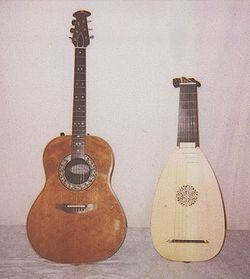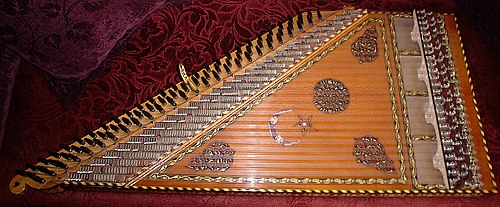




Plucked string instruments are a subcategory of string instruments that are played by plucking the strings. Plucking is a way of pulling and releasing the string in such a way as to give it an impulse that causes the string to vibrate. Plucking can be done with either a finger or a plectrum.
Contents
Most plucked string instruments belong to the lute family (such as guitar, bass guitar, mandolin, banjo, balalaika, sitar, pipa, etc.), which generally consist of a resonating body, and a neck; the strings run along the neck and can be stopped at different pitches.
The zither family (including the Qanún/kanun, autoharp, kantele, gusli, kannel, kankles, kokles, koto, guqin, gu zheng and many others) does not have a neck, and the strings are stretched across the soundboard.
In the harp family (including the lyre), the strings are perpendicular to the soundboard and do not run across it. The harpsichord does not fit any of these categories but is also a plucked string instrument, as its strings are struck with a plectrum when the keys are depressed.
Bowed string instruments, such as the violin, can also be plucked in the technique known as pizzicato; however, as they are usually played with a bow, they are not included in this category. Struck string instruments (such as the piano) can be similarly plucked as an extended technique.
Plucked string instruments are not a category in the Sachs-Hornbostel classification, aside from 335 and 336, as some of them are simple chordophones and others are composite. It's depending on whether the resonator is the removable part of the instrument.